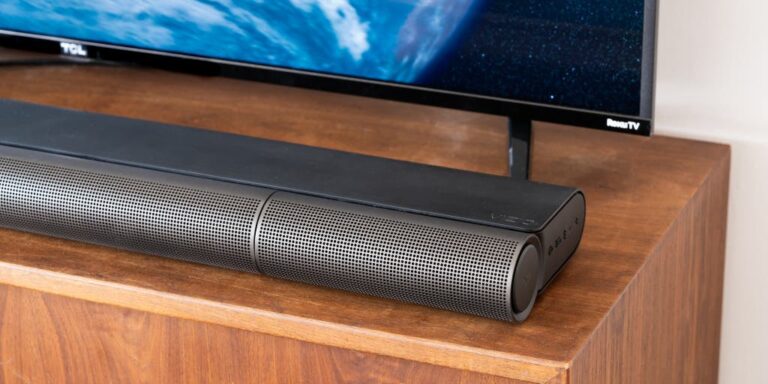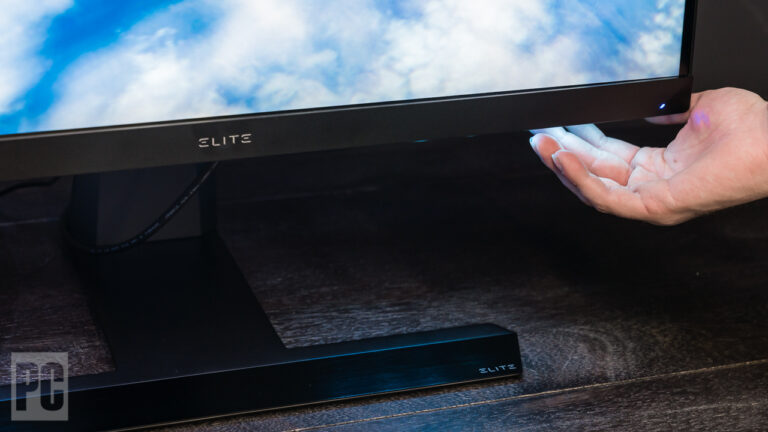Monitor Not Coming on After Sleep: Troubleshooting Tips
If your monitor is not coming on after sleep, first check the signal source and ensure that the computer is not in standby or sleep mode. Then, make sure that the video cable is properly plugged in, and disconnect and reconnect it if necessary.
These troubleshooting steps can help resolve the issue and wake the monitor up from sleep mode. It is also suggested to run the power troubleshooter and check if the problem persists. Additionally, you can try changing the power settings in the control panel.
By following these steps, you can fix the issue of the monitor not turning on after sleep and ensure smooth operation.

Credit: www.healthline.com
Confirm Cable Connectivity
If your monitor is not coming on after sleep, there are a few troubleshooting steps you can take. First, check the signal source and ensure your computer is not in standby or sleep mode. Next, make sure the video cable is plugged in properly and try disconnecting and reconnecting it if necessary.
When your monitor fails to turn on after sleep mode, one of the first things you should check is the cable connectivity. Inadequate or improper cable connections can lead to display issues. Follow the steps below to confirm the cable connectivity:
Inspect Video Cable Connections
Start by inspecting all the video cable connections. Ensure that the cable is securely plugged into both the computer and the monitor. A loose connection can cause signal interruptions and prevent the monitor from turning on properly.
If there are any visible signs of damage on the cable, such as frayed wires or bent pins, replace the cable with a new one. It’s crucial to use high-quality cables to ensure optimal signal transmission.
Reconnect Video Cables
If inspecting the cable connections doesn’t resolve the issue, try disconnecting and reconnecting them. Sometimes, the connectors can become loose over time, resulting in a weak connection. Reconnecting the cables ensures a proper and secure connection, which can help resolve the problem.
When reconnecting the video cables, firmly insert them into the corresponding ports on both the computer and the monitor. Ensure that the connections are snug and that there are no visible gaps or play in the connectors.
Once you’ve confirmed and adjusted the cable connectivity, try turning on the monitor again after sleep mode to check if the issue has been resolved.
Remember, proper cable connectivity is crucial for a functioning monitor. By inspecting and reconnecting the video cables, you can eliminate potential connectivity issues and increase the chances of your monitor turning on successfully after sleep mode.
Monitor Sleep Settings
One frustrating issue that many computer users encounter is when their monitor fails to turn on after being in sleep mode. This can be quite a nuisance, especially when you need to get back to work or browse the web. However, there are a few simple steps you can take to troubleshoot this problem. In this article, we will focus on the monitor sleep settings and how you can modify them to fix the issue.
Access On-screen Display Settings
The first step is to navigate to the On-Screen Display (OSD) settings on your monitor. This can usually be done by pressing the OSD menu button on the front panel of the monitor. Once you have accessed the OSD menu, look for the “Others” option and select it.
Modify Monitor Deep Sleep Options
Within the “Others” menu, you should find the option to modify the “Monitor Deep Sleep” settings. This feature enables the monitor to go into a deeper sleep mode to save power when not in use. However, sometimes this setting can cause issues and prevent the monitor from waking up properly. To fix this, simply disable the “Monitor Deep Sleep” option within the OSD menu.
By modifying these sleep settings, you can often resolve the issue of your monitor not turning on after sleep mode. Remember to save any changes made and exit the OSD menu. Now, try putting your computer to sleep and waking it up again to see if the problem is resolved.
If the issue persists, there are other troubleshooting steps you can take. Checking the signal source, ensuring the computer is not in standby or sleep mode, and verifying that the video cable is properly plugged in are all important tasks to consider. Additionally, running the Power Troubleshooter on your computer can help identify and resolve any power-related issues that may be causing the problem.
Monitor sleep issues can be frustrating, but with the right adjustments to the sleep settings and some troubleshooting steps, you can get your monitor back to working as it should. Remember to always check for loose or damaged cable connections, update drivers, and perform necessary software updates to ensure optimal performance.
Windows Power Troubleshooter
If your monitor is not coming on after sleep, there are a few steps you can take to troubleshoot the issue. First, check the signal source and ensure that the computer is not in standby or sleep mode. Additionally, make sure the video cable is plugged in properly and try disconnecting and reconnecting it if necessary.
You can also run the Windows Power troubleshooter to check if there are any issues with the power settings.
If your monitor is not coming on after sleep mode, one troubleshooting option you can try is the Windows Power Troubleshooter. This tool is designed to identify and help fix power-related issues on your computer, including problems with the screen not waking up after sleep mode.
Directions For Running Troubleshooter
- Press the Windows key to launch the Start screen.
- Type “troubleshoot” and click on the “Troubleshoot settings” option that appears.
- In the Troubleshoot settings window, scroll down and click on the “Power” option.
- Click on the “Run the troubleshooter” button.
- Follow the on-screen instructions to complete the troubleshooter process.
- Once the troubleshooter has finished running, it will provide you with any detected issues and possible fixes.
By following these directions and running the Windows Power Troubleshooter, you can identify and resolve any power-related issues that may be causing your monitor to not come on after sleep mode.
Adjust Related Power Settings
In addition to running the Windows Power Troubleshooter, you can also try adjusting related power settings to ensure your monitor wakes up properly after sleep mode. Here’s how:
- Open the Power Options on your computer. You can do this by right-clicking on the Start button and selecting “Power Options” from the menu.
- In the Power Options window, click on the “Change plan settings” link next to the power plan you are currently using.
- In the next window, click on the “Change advanced power settings” link.
- A new window will open with a list of power settings. Expand the “Hard disk” option and locate the “Turn off hard disk after” setting.
- Set the value for “Turn off hard disk after” to a longer duration or disable it entirely.
By adjusting these power settings, you can ensure that your monitor stays awake after sleep mode and doesn’t go into a power-saving state that prevents it from turning on.
Next time your monitor is not coming on after sleep mode, try running the Windows Power Troubleshooter and adjusting the related power settings to address the issue. These steps should help you resolve the problem and get your monitor working properly again.
Hard Disk Power Settings
One of the common reasons why a monitor may not come on after sleep mode is due to the hard disk power settings. By default, the computer’s power settings are configured to turn off the hard disk after a certain period of inactivity. This can cause the monitor to not receive any signal from the computer, leading to a black screen upon waking up from sleep mode.
Change Power Option Settings
To resolve this issue, you need to change the Power Option settings on your computer. Here’s how:
- Open the Power Options from the Control Panel or by right-clicking on the battery icon in the system tray.
- Select the power plan that is currently active and click on the “Change plan settings” link next to it.
- Click on the “Change advanced power settings” link.
Adjust Hard Disk Turn-off Settings
Once you are in the advanced power settings, you need to adjust the hard disk turn-off settings. Follow these steps:
- Expand the “Hard disk” category by clicking on the plus sign next to it.
- Locate the “Turn off hard disk after” option and set it to a higher value, such as “Never” or a longer duration than the default setting.
- Click on the “Apply” button and then click on “OK” to save the changes.
By adjusting the hard disk turn-off settings, you ensure that the hard disk stays active even during periods of inactivity, preventing the monitor from losing its signal when the computer wakes up from sleep mode.
If you are still facing issues with your monitor not coming on after sleep mode, it is recommended to check other possible causes such as the video cable connection, driver updates, or hardware faults.
Adjusting Hardware Power Management
If your monitor is not coming on after sleep, there are a few things you can try. First, make sure the signal source is checked. Next, ensure that the computer is not in standby or sleep mode by moving the mouse or pressing a key on the keyboard.
Also, check if the video cable is properly plugged in and reconnect if necessary.
Verify Keyboard And Mouse Wake-up Settings
If your monitor is not coming on after sleep, it may be due to your keyboard and mouse wake-up settings. To check and adjust these settings, follow the steps below:
- Press the Windows key on your keyboard to open the Start screen.
- Type “Power options” and select it from the search results.
- In the Power Options window, click on “Change plan settings” next to the power plan you are using.
- Click on “Change advanced power settings.”
- In the Advanced Power Settings window, expand the “Sleep” option.
- Expand the “Allow wake timers” option and set it to “Enabled.”
- Expand the “USB settings” option and set “Selective suspend” to “Disabled.”
- Click on “Apply” and then “OK” to save the changes.
Bios Power Management Options
Another reason why your monitor may not be coming on after sleep is due to BIOS power management options. To adjust these options, you can follow the steps below:
- Restart your computer and access the BIOS settings by pressing the designated key during the startup process (common keys include F2, Del, or Esc).
- Navigate through the BIOS settings using the arrow keys on your keyboard.
- Look for a section related to power management or power options.
- Within this section, you may find options such as “Wake on LAN,” “Wake on USB,” or “Wake on keyboard/mouse.”
- Enable these options if they are currently disabled.
- Save the changes and exit the BIOS settings.
Software And Driver Considerations
When troubleshooting the issue of your monitor not coming on after sleep, it’s crucial to consider potential software and driver-related factors. Outdated or incompatible video drivers, as well as improper sleep mode settings within the operating system (OS), can often be the culprits behind this problem. Here are some steps you can take to address these considerations:
Update Video Drivers
One common cause of a monitor not turning on after sleep is outdated or faulty video drivers. To ensure that your video drivers are up to date, follow these steps:
- Step 1: Press the Windows key to open the Start menu.
- Step 2: Type “Device Manager” and click on the corresponding result.
- Step 3: In the Device Manager window, expand the “Display adapters” category.
- Step 4: Right-click on your video driver and select “Update driver.”
- Step 5: Choose the option to automatically search for updated driver software.
- Step 6: Follow the on-screen instructions to install any available updates.
By updating your video drivers, you can often resolve compatibility issues that may be preventing your monitor from waking up after sleep.
Reviewing Sleep Mode Settings Within The Os
Another factor to consider when troubleshooting a monitor that won’t come on after sleep is the sleep mode settings within your operating system. Here’s how you can review and modify these settings:
- Step 1: Open the Power Options menu in your operating system.
- Step 2: Click on “Change plan settings” next to your selected power plan.
- Step 3: Select “Change advanced power settings.”
- Step 4: Locate the “Hard disk” option and expand it.
- Step 5: Look for “Turn off hard disk after” and set it to a time that suits your preferences.
By adjusting the sleep mode settings within your operating system, you can prevent your monitor from entering a deep sleep state, ensuring it comes on reliably after periods of inactivity.
By considering the software and driver-related factors mentioned above, you can increase the likelihood of resolving the issue of your monitor not coming on after sleep. Update your video drivers to ensure compatibility, and review and modify the sleep mode settings within your operating system to prevent your monitor from entering a deep sleep state. Taking these steps can help you enjoy a responsive and reliable monitor experience.
Disable Deep Sleep Feature
If your monitor is not coming on after sleep mode, there are a few steps you can take. First, check the signal source and ensure the computer is not in standby or sleep mode. Then, make sure the video cable is properly plugged in and reconnect it if necessary.
Finally, you can try disabling the deep sleep feature on your monitor’s on-screen display settings.
If your monitor is not coming on after sleep mode, one possible solution is to disable the deep sleep feature. This feature allows the monitor to enter a low-power state when it is not in use for an extended period. While this can help save energy, it may sometimes cause issues when the monitor fails to wake up properly.
Steps To Disable Monitor Deep Sleep
To disable the deep sleep feature on your monitor, follow these simple steps:
- Turn on your monitor and access the On-Screen Display.
- Select the “Others” option from the menu.
- Look for the “Monitor Deep Sleep” setting and select it.
- Disable the deep sleep feature in the settings.
- Save the changes and exit the On-Screen Display menu.
By following these steps, you can effectively prevent the monitor from entering deep sleep mode and ensure it wakes up properly after sleep mode.
Impact On Monitor Behavior
Disabling the deep sleep feature can have a positive impact on the behavior of your monitor after sleep mode. By keeping the monitor active instead of allowing it to enter deep sleep, you reduce the risk of encountering issues such as a black screen or no signal when trying to wake up the monitor.
However, it’s important to note that disabling the deep sleep feature may slightly increase power consumption. The monitor will remain in a more active state even when not in use, which could lead to a small increase in energy usage. Nevertheless, this trade-off ensures a smoother experience when waking up the monitor.
Signal Source And External Monitor Issues
If your monitor is not coming on after sleep mode, there are a few things you can check. First, make sure the signal source is properly connected and the computer is not in standby or sleep mode. You can also try disconnecting and reconnecting the video cable.
If the issue persists, you can try troubleshooting using the Power troubleshooter or checking the monitor settings for options like “Monitor Deep Sleep” and disabling them.
The monitor not turning on after sleep can be a frustrating situation, but there are a few common issues that you can troubleshoot to resolve the problem. One of the potential causes could be related to the signal source or external monitor issues. In this section, we will discuss two specific areas to focus on when troubleshooting this issue.Ensure Correct Source Selection
Sometimes, the monitor may not display anything after sleep because the wrong signal source is selected. To resolve this, you can follow the steps below:- Check the signal source selection on your monitor. On some monitors, you can access the On-Screen Display (OSD) by pressing specific buttons.
- Select “Others” or a similar option in the OSD menu.
- Look for the “Monitor Deep Sleep” or a similar option and disable it. This feature is designed to save power by putting the monitor into a deep sleep mode, but it can prevent the monitor from waking up after sleep.
- Save the changes and exit the OSD menu.
Troubleshoot Usb-c And Dp Connections
If you are using an external monitor connected via USB-C or DisplayPort (DP), the connection itself can sometimes cause issues with the monitor not waking up after sleep. Follow the steps below to troubleshoot these connections:- Check if the USB-C or DP cable is properly connected to both the laptop and the monitor.
- If the cable seems loose or damaged, try using a different cable to establish a more secure connection.
- If you are using an adapter or a docking station, ensure that the cables are securely connected to those as well.
- Try disconnecting and reconnecting the USB-C or DP cable on both ends to refresh the connection.
- Restart your laptop and monitor to see if the issue persists.
Frequently Asked Questions For Monitor Not Coming On After Sleep
How Do I Get My Monitor Out Of Sleep Mode?
To get your monitor out of sleep mode, follow these steps: 1. Check the signal source and make sure it’s selected correctly. 2. Move your mouse or press any key on the keyboard to wake up your computer from standby or sleep mode.
3. Ensure the video cable is properly connected. If necessary, disconnect and reconnect it. 4. If your monitor has an on-screen display, go to “Others -> Monitor Deep Sleep” and disable it. 5. If the issue persists, run the Power troubleshooter or check your power settings in the Control Panel.
For more detailed instructions, search online or visit relevant forums and communities.
How Do I Fix My Black Screen After Sleep Mode?
To fix a black screen after sleep mode: 1. Check the signal source and ensure the computer is not in standby or sleep mode by moving the mouse or pressing any key on the keyboard. 2. Make sure the video cable is properly plugged in.
Disconnect and reconnect if necessary. 3. Try running the Power troubleshooter on your system. 4. Check your power settings and make sure the monitor is set to wake up from sleep mode. 5. If all else fails, try updating your keyboard and mouse drivers, and resetting your BIOS settings.
Why Wont My Desktop Turn On After Sleep Mode?
If your desktop won’t turn on after sleep mode, try these steps: 1. Check the signal source and make sure the computer is not in standby or sleep mode. 2. Ensure the video cable is plugged in properly. 3. Disconnect and reconnect the video cable if necessary.
4. Run the Power troubleshooter to identify any issues. 5. Update keyboard and mouse drivers, disable hybrid sleep and wake timers, and reset BIOS settings using the Windows Power Troubleshooter.
Why Is My Monitor Suddenly Not Turning On?
If your monitor suddenly won’t turn on, check the signal source and ensure your computer is not in sleep or standby mode. Also, make sure the video cable is properly connected. If necessary, disconnect and reconnect the video cable.
Conclusion
If your monitor is not coming on after sleep, there are a few troubleshooting steps you can try. First, check the signal source and ensure that the computer is not in standby or sleep mode. Next, make sure the video cable is properly plugged in and try disconnecting and reconnecting it if needed.
You can also run the Power troubleshooter and check the Power Options settings. If none of these solutions work, it may be worth considering contacting technical support for further assistance.





